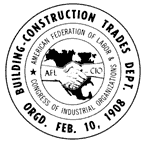A.M.
de Jong
Delft University of Technology, Department of Civil Engineering
Section Building Processes
P.O. Box 5048
2600 GA Delft, The Netherlands
Phone: +31 15 2782764
Fax: +31 15 2781560
W.F. Schaefer
Eindhoven University of Technology, Department of Architecture
PO Box 513
5600 MB Eindhoven, The Netherlands
P. Vink
TNO Work and Employment
PO Box 718
2130 AS Hoofddorp, The Netherlands
The construction industry is a special type of industry in which a large amount of the work is concentrated at a construction site including much manual labor. To reduce the amount of manual labor mechanical devices for a number of professions have been developed which were aimed to be used in several situations. The devices were developed by participatory ergonomic projects, in which a limited number of important parties were involved. The purpose of the participatory projects was to develop devices which were suitable to be used by the entire target group and not just by the involved parties in the project.
In this paper these participative projects will be evaluated. The purpose of this evaluation is to determine whether or not the results are suitable for the construction companies by analyzing adoption numbers, reduction of physical load and users' satisfaction. The evaluation was carried out by sending questionnaires to construction companies and by doing interviews with participants.
Five projects will be analyzed:
- A project for the glaziers industry which mainly resulted in a number of product innovations for horizontal and vertical transport. The project was organized by involving management and employees of three glazing companies, a trade company and experts. The innovations however, were destined to be used by all glazier companies of the trade.
- A project for the scaffolding industry which resulted both in product and process innovations to reduce physical load and improve personal safety. This project was organized by involving management and employees of two scaffolding companies and experts. These innovations were also designed to be used by other companies in the trade.
- A project for the bricklaying industry which resulted in a large number of innovations to be used for transport, processing materials and storage. This project was organized for the whole sector by involving a number of trade organizations, the producers of the materials and representatives of the processors of the materials.
- A project to reduce physical load of painters by developing devices which physically support the painter during standing and devices which reduce bending and reaching. This project is still going on, and adoption will be estimated. The innovations were aimed to be used by the whole trade.
- A project which aims to reduce three types of physical load of employees of one company which is specialized in installation work and mechanical manufacturing. At this moment, the evaluation of the adoption of the innovations is taking place.
The evaluation of all projects is still taking place, however preliminary results show that the adoption differ for several results of one project and for each project. The adopted devices are said to reduce physical load to a sufficient extent and users show positive to very positive reactions to the use of the innovations.
![]()
This paper appears in the eLCOSH website with the permission of the author
and/or copyright holder and may not be reproduced without their consent.
eLCOSH is an information clearinghouse. eLCOSH and its sponsors are not
responsible for the accuracy of information provided on this web site,
nor for its use or misuse.
![]() eLCOSH
| CDC | NIOSH
| Site Map | Search
| Links | Help
| Contact Us | Privacy Policy
eLCOSH
| CDC | NIOSH
| Site Map | Search
| Links | Help
| Contact Us | Privacy Policy


